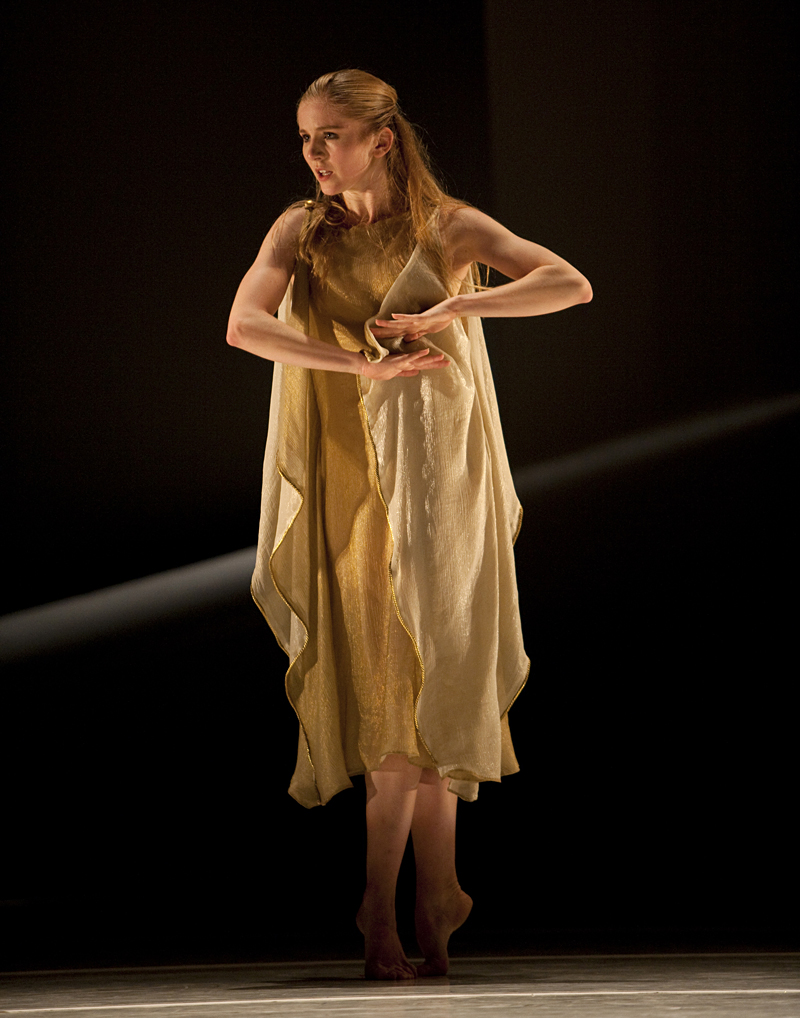Pacific Northwest Ballet used to have a sumptuous production of Romeo and Juliet, choreographed by former director Kent Stowell, that served the company handsomely. But when Peter Boal became director in 2005, he had his eye on a different version, a kinetic hybrid by Jean-Christophe Maillot from Les Ballets de Monte Carlo. Maillot’s version borrowed elements from film and theater, incorporated modern-dance vocabulary, and made bold cuts to the original text. It’s a kinetic roller-coaster ride, challenging enough to satisfy ballet insiders while still accessible to newbies. In many ways, this is the ballet that best characterizes Boal’s artistic vision for PNB; and after renting the sets and costumes for its 2008 debut of Maillot’s Romeo et Juliette, PNB has now created its own—the equivalent of buying a house after renting an apartment. This is the Romeo we’re keeping. And this is the Romeo the company is taking to New York next week.Opening weekend, showing off the freshly finished sets and costumes, was full of drama—some intended, some not. Many in the cast were coming back to roles they’d danced before. Both Juliets—to use the English spelling—were building on previous experience, but with different perspectives. Kaori Nakamura has taken every extraneous element out of her interpretation, so that the ballet becomes a transparent set of cause-and-effect actions. From the first time she rushes onstage to her final suicide, we see each choice made, yet feel there is no alternative. Carla Korbes has a different approach to her Juliet: She’s so caught up in the flush of young love that we’re swept along, too. No matter how familiar we are with the story, the tragic ending comes as a surprise.James Moore, newly promoted to principal dancer, is again Nakamura’s Romeo, and it’s an even better fit than in their last outing. Besides their tender relationship, he does excellent work in scenes with Jonathan Porretta’s Mercutio and Benjamin Griffiths’ Benvolio. Those two characters are instantly recognizable—Porretta a prankster and Griffiths a softhearted sidekick, whose “Hey, wait for me!” entrance at the start of the show strikes a charming note every time. The trio has a wonderful Three Musketeers quality that becomes more poignant as Romeo is drawn away from his pals by his love for Juliet. Seth Orza makes a powerful debut as Korbes’ Romeo. His best moments are in the duets, where his impulsiveness meshes with hers.Maillot’s choreography eliminates some characters and puts others in a more prominent place. His versions of the Nurse and of Lady Capulet are almost as central to the work as Juliet, and reflect very different styles. The Nurse reads like a comic-book character, while Lady Capulet is close to one of Martha Graham’s anguished heroines. Carrie Imler and Rachel Foster both have the right sharpness as the Nurse, holding a double-take long enough for the audience to catch on. In the same role, Margaret Mullin gives a strong debut performance, and should settle into the humor soon. Both Lindsi Dec and Laura Gilbreath use their height to great effect as Lady Capulet; when they shudder and writhe after Tybalt is killed, you can really see the impulse travel through their long torsos.Some parts have multiple performers, others don’t. Batkhurel Bold danced all the Tybalts opening weekend, and Karel Cruz was the only Friar Laurence. Griffiths was scheduled to dance Benvolio the entire first weekend, but when he injured his foot Sunday morning, no understudy was available. Instead, through a combination of hard work and dumb luck, PNB managed to fill the part, twice. Corps member Eric Hipolito Jr. immediately started learning it, but Benvolio is a very complex role, full of partnering, fighting, and other stage business. Fortunately, a group from the Monte Carlo company happened to be arriving in Seattle that very afternoon; among them was Raphael Bouchard, who regularly performs Benvolio! Somehow they got him to the theater and into a costume. Hipolito went on in the first scene, and by the time Benvolio was supposed to make another entrance, Bouchard was there. He dances a slightly different version of the role, and it was fascinating to see the changes. But the main sensation was relief—never mind Shakespeare’s tragedy, the real drama was backstage!stage@seattleweekly.com
Pacific Northwest Ballet used to have a sumptuous production of Romeo and








